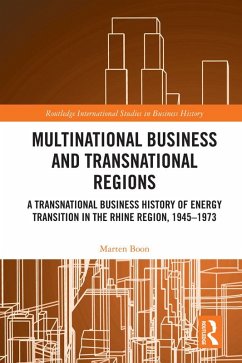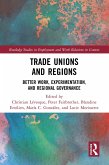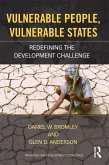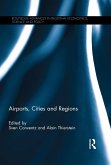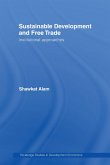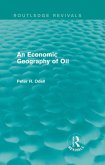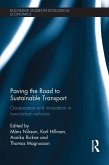Marten Boon
Multinational Business and Transnational Regions (eBook, PDF)
A Transnational Business History of Energy Transition in the Rhine Region, 1945-1973
42,95 €
42,95 €
inkl. MwSt.
Sofort per Download lieferbar

21 °P sammeln
42,95 €
Als Download kaufen

42,95 €
inkl. MwSt.
Sofort per Download lieferbar

21 °P sammeln
Jetzt verschenken
Alle Infos zum eBook verschenken
42,95 €
inkl. MwSt.
Sofort per Download lieferbar
Alle Infos zum eBook verschenken

21 °P sammeln
Marten Boon
Multinational Business and Transnational Regions (eBook, PDF)
A Transnational Business History of Energy Transition in the Rhine Region, 1945-1973
- Format: PDF
- Merkliste
- Auf die Merkliste
- Bewerten Bewerten
- Teilen
- Produkt teilen
- Produkterinnerung
- Produkterinnerung

Bitte loggen Sie sich zunächst in Ihr Kundenkonto ein oder registrieren Sie sich bei
bücher.de, um das eBook-Abo tolino select nutzen zu können.
Hier können Sie sich einloggen
Hier können Sie sich einloggen
Sie sind bereits eingeloggt. Klicken Sie auf 2. tolino select Abo, um fortzufahren.

Bitte loggen Sie sich zunächst in Ihr Kundenkonto ein oder registrieren Sie sich bei bücher.de, um das eBook-Abo tolino select nutzen zu können.
Multinational Enterprise and Transnational Regions offers an innovative transnational approach to the study of the history of economic regions. The historiography of the economic development of the Rhine region, a transnational economic region loosely comprising the cities and areas in the Rhine basin, has traditionally focused on the local and national histories of its constituent parts.
- Geräte: PC
- mit Kopierschutz
- eBook Hilfe
- Größe: 21.69MB
Andere Kunden interessierten sich auch für
![Multinational Business and Transnational Regions (eBook, ePUB) Multinational Business and Transnational Regions (eBook, ePUB)]() Marten BoonMultinational Business and Transnational Regions (eBook, ePUB)42,95 €
Marten BoonMultinational Business and Transnational Regions (eBook, ePUB)42,95 €![Trade Unions and Regions (eBook, PDF) Trade Unions and Regions (eBook, PDF)]() Trade Unions and Regions (eBook, PDF)42,95 €
Trade Unions and Regions (eBook, PDF)42,95 €![Vulnerable People, Vulnerable States (eBook, PDF) Vulnerable People, Vulnerable States (eBook, PDF)]() Daniel BromleyVulnerable People, Vulnerable States (eBook, PDF)56,95 €
Daniel BromleyVulnerable People, Vulnerable States (eBook, PDF)56,95 €![Airports, Cities and Regions (eBook, PDF) Airports, Cities and Regions (eBook, PDF)]() Airports, Cities and Regions (eBook, PDF)46,95 €
Airports, Cities and Regions (eBook, PDF)46,95 €![Sustainable Development and Free Trade (eBook, PDF) Sustainable Development and Free Trade (eBook, PDF)]() Shawkat AlamSustainable Development and Free Trade (eBook, PDF)57,95 €
Shawkat AlamSustainable Development and Free Trade (eBook, PDF)57,95 €![An Economic Geography of Oil (Routledge Revivals) (eBook, PDF) An Economic Geography of Oil (Routledge Revivals) (eBook, PDF)]() Peter OdellAn Economic Geography of Oil (Routledge Revivals) (eBook, PDF)42,95 €
Peter OdellAn Economic Geography of Oil (Routledge Revivals) (eBook, PDF)42,95 €![Paving the Road to Sustainable Transport (eBook, PDF) Paving the Road to Sustainable Transport (eBook, PDF)]() Paving the Road to Sustainable Transport (eBook, PDF)52,95 €
Paving the Road to Sustainable Transport (eBook, PDF)52,95 €-
-
-
Multinational Enterprise and Transnational Regions offers an innovative transnational approach to the study of the history of economic regions. The historiography of the economic development of the Rhine region, a transnational economic region loosely comprising the cities and areas in the Rhine basin, has traditionally focused on the local and national histories of its constituent parts.
Dieser Download kann aus rechtlichen Gründen nur mit Rechnungsadresse in A, B, BG, CY, CZ, D, DK, EW, E, FIN, F, GR, HR, H, IRL, I, LT, L, LR, M, NL, PL, P, R, S, SLO, SK ausgeliefert werden.
Produktdetails
- Produktdetails
- Verlag: Taylor & Francis eBooks
- Seitenzahl: 250
- Erscheinungstermin: 19. März 2018
- Englisch
- ISBN-13: 9781315455969
- Artikelnr.: 53175575
- Verlag: Taylor & Francis eBooks
- Seitenzahl: 250
- Erscheinungstermin: 19. März 2018
- Englisch
- ISBN-13: 9781315455969
- Artikelnr.: 53175575
- Herstellerkennzeichnung Die Herstellerinformationen sind derzeit nicht verfügbar.
Marten Boon is Postdoctoral Fellow at the Department of History at Norwegian University of Science and Technology, Trondheim.
Introduction
Transnational economic regions: capturing an illusive phenomenon
Resurrecting the Rhine as an economic region
Energy transition in the Rhine region
Part I Regional transformation - Energy transition in the Rhine region
Chapter 1 The post-war reconstruction and the rise of oil, 1945-1951
1.1 Introduction
1.2 The question of energy in post-war Western Europe
1.3 The impact of the Allied occupation on the Ruhr coal industry
1.4 The Allied refining program: restarting the hydrogenation plants
1.5 The case of Union Kraftstoff
1.6 The geographical consequences of the Allied occupation
1.7 Conclusion
Chapter 2 Oil unbounded: The Coal Crisis of 1957-8
2.1 Introduction
2.2 The competition between coal and oil, 1950-1955
2.3 The rise of fuel oil and the 1958 coal crisis
2.4 Stemming the tide: attempts to limit the rise of fuel oil
2.5 Conclusion
Chapter 3 The growth of chemical clusters in the Rhine region, 1960-73
3.1 Introduction
3.2 The Rhine-Ruhr refineries
3.3 Deutsche Shell and Union Kraftstoff, 1951-1958
3.4 The Rhineland refinery of Deutsche Shell
3.5 The post-war transition of the chemical industry
3.6 An oil and petrochemical cluster in the Rhine-Ruhr area
3.7 Effect of the transition on transport demand in the hinterland
3.8 Conclusions
Part II Regional connections - From Rhine to pipeline
Chapter 4 Pipelines: The national approach, 1955-6
4.1 Introduction
4.2 A pipeline to the Rhine-Ruhr area
4.3 Rotterdam competing with Wilhelmshaven
4.4 Wilhelmshaven: "the best deep water port in Europe"?
4.5 Conclusions
Chapter 5 The trans-European pipeline: The transnational approach: 1956-8
5.1 Introduction
5.2 From national to transnational: the trans-European pipeline plan
5.3 Further complications
5.4 France, oil and the Cold War
5.5 Endgame: The failure of the trans-European pipeline
5.6 Why the trans-European pipeline never materialised
5.7 Conclusion
Chapter 6 Expanding transnational connections, 1959-73
6.1 Introduction
6.2 The hydrocarbon hub: The Rotterdam port between 1950 and 1973
6.3 The expansion of the Rotterdam-Rhine pipeline, 1965-1968
6.4 The Rhine-Main pipeline, 1965-1971
6.5 Integrating chemical clusters in the Rhine basin, 1965-73
6.6 The Rotterdam-Antwerp pipeline, 1967-1969
6.7 Conclusion
Chapter 7 Transnational connections in the Rhine region: Evidence from
transport flows
7.1 Introduction
7.2 Gateway to the Rhine? Rotterdam from transitopolis to industrial port
7.3 Oil flows in the Rhine region: The impact of pipelines
7.4 Transnational connections
7.5 Conclusion
Chapter 8 Conclusion
Transnational economic regions: capturing an illusive phenomenon
Resurrecting the Rhine as an economic region
Energy transition in the Rhine region
Part I Regional transformation - Energy transition in the Rhine region
Chapter 1 The post-war reconstruction and the rise of oil, 1945-1951
1.1 Introduction
1.2 The question of energy in post-war Western Europe
1.3 The impact of the Allied occupation on the Ruhr coal industry
1.4 The Allied refining program: restarting the hydrogenation plants
1.5 The case of Union Kraftstoff
1.6 The geographical consequences of the Allied occupation
1.7 Conclusion
Chapter 2 Oil unbounded: The Coal Crisis of 1957-8
2.1 Introduction
2.2 The competition between coal and oil, 1950-1955
2.3 The rise of fuel oil and the 1958 coal crisis
2.4 Stemming the tide: attempts to limit the rise of fuel oil
2.5 Conclusion
Chapter 3 The growth of chemical clusters in the Rhine region, 1960-73
3.1 Introduction
3.2 The Rhine-Ruhr refineries
3.3 Deutsche Shell and Union Kraftstoff, 1951-1958
3.4 The Rhineland refinery of Deutsche Shell
3.5 The post-war transition of the chemical industry
3.6 An oil and petrochemical cluster in the Rhine-Ruhr area
3.7 Effect of the transition on transport demand in the hinterland
3.8 Conclusions
Part II Regional connections - From Rhine to pipeline
Chapter 4 Pipelines: The national approach, 1955-6
4.1 Introduction
4.2 A pipeline to the Rhine-Ruhr area
4.3 Rotterdam competing with Wilhelmshaven
4.4 Wilhelmshaven: "the best deep water port in Europe"?
4.5 Conclusions
Chapter 5 The trans-European pipeline: The transnational approach: 1956-8
5.1 Introduction
5.2 From national to transnational: the trans-European pipeline plan
5.3 Further complications
5.4 France, oil and the Cold War
5.5 Endgame: The failure of the trans-European pipeline
5.6 Why the trans-European pipeline never materialised
5.7 Conclusion
Chapter 6 Expanding transnational connections, 1959-73
6.1 Introduction
6.2 The hydrocarbon hub: The Rotterdam port between 1950 and 1973
6.3 The expansion of the Rotterdam-Rhine pipeline, 1965-1968
6.4 The Rhine-Main pipeline, 1965-1971
6.5 Integrating chemical clusters in the Rhine basin, 1965-73
6.6 The Rotterdam-Antwerp pipeline, 1967-1969
6.7 Conclusion
Chapter 7 Transnational connections in the Rhine region: Evidence from
transport flows
7.1 Introduction
7.2 Gateway to the Rhine? Rotterdam from transitopolis to industrial port
7.3 Oil flows in the Rhine region: The impact of pipelines
7.4 Transnational connections
7.5 Conclusion
Chapter 8 Conclusion
Introduction
Transnational economic regions: capturing an illusive phenomenon
Resurrecting the Rhine as an economic region
Energy transition in the Rhine region
Part I Regional transformation - Energy transition in the Rhine region
Chapter 1 The post-war reconstruction and the rise of oil, 1945-1951
1.1 Introduction
1.2 The question of energy in post-war Western Europe
1.3 The impact of the Allied occupation on the Ruhr coal industry
1.4 The Allied refining program: restarting the hydrogenation plants
1.5 The case of Union Kraftstoff
1.6 The geographical consequences of the Allied occupation
1.7 Conclusion
Chapter 2 Oil unbounded: The Coal Crisis of 1957-8
2.1 Introduction
2.2 The competition between coal and oil, 1950-1955
2.3 The rise of fuel oil and the 1958 coal crisis
2.4 Stemming the tide: attempts to limit the rise of fuel oil
2.5 Conclusion
Chapter 3 The growth of chemical clusters in the Rhine region, 1960-73
3.1 Introduction
3.2 The Rhine-Ruhr refineries
3.3 Deutsche Shell and Union Kraftstoff, 1951-1958
3.4 The Rhineland refinery of Deutsche Shell
3.5 The post-war transition of the chemical industry
3.6 An oil and petrochemical cluster in the Rhine-Ruhr area
3.7 Effect of the transition on transport demand in the hinterland
3.8 Conclusions
Part II Regional connections - From Rhine to pipeline
Chapter 4 Pipelines: The national approach, 1955-6
4.1 Introduction
4.2 A pipeline to the Rhine-Ruhr area
4.3 Rotterdam competing with Wilhelmshaven
4.4 Wilhelmshaven: "the best deep water port in Europe"?
4.5 Conclusions
Chapter 5 The trans-European pipeline: The transnational approach: 1956-8
5.1 Introduction
5.2 From national to transnational: the trans-European pipeline plan
5.3 Further complications
5.4 France, oil and the Cold War
5.5 Endgame: The failure of the trans-European pipeline
5.6 Why the trans-European pipeline never materialised
5.7 Conclusion
Chapter 6 Expanding transnational connections, 1959-73
6.1 Introduction
6.2 The hydrocarbon hub: The Rotterdam port between 1950 and 1973
6.3 The expansion of the Rotterdam-Rhine pipeline, 1965-1968
6.4 The Rhine-Main pipeline, 1965-1971
6.5 Integrating chemical clusters in the Rhine basin, 1965-73
6.6 The Rotterdam-Antwerp pipeline, 1967-1969
6.7 Conclusion
Chapter 7 Transnational connections in the Rhine region: Evidence from
transport flows
7.1 Introduction
7.2 Gateway to the Rhine? Rotterdam from transitopolis to industrial port
7.3 Oil flows in the Rhine region: The impact of pipelines
7.4 Transnational connections
7.5 Conclusion
Chapter 8 Conclusion
Transnational economic regions: capturing an illusive phenomenon
Resurrecting the Rhine as an economic region
Energy transition in the Rhine region
Part I Regional transformation - Energy transition in the Rhine region
Chapter 1 The post-war reconstruction and the rise of oil, 1945-1951
1.1 Introduction
1.2 The question of energy in post-war Western Europe
1.3 The impact of the Allied occupation on the Ruhr coal industry
1.4 The Allied refining program: restarting the hydrogenation plants
1.5 The case of Union Kraftstoff
1.6 The geographical consequences of the Allied occupation
1.7 Conclusion
Chapter 2 Oil unbounded: The Coal Crisis of 1957-8
2.1 Introduction
2.2 The competition between coal and oil, 1950-1955
2.3 The rise of fuel oil and the 1958 coal crisis
2.4 Stemming the tide: attempts to limit the rise of fuel oil
2.5 Conclusion
Chapter 3 The growth of chemical clusters in the Rhine region, 1960-73
3.1 Introduction
3.2 The Rhine-Ruhr refineries
3.3 Deutsche Shell and Union Kraftstoff, 1951-1958
3.4 The Rhineland refinery of Deutsche Shell
3.5 The post-war transition of the chemical industry
3.6 An oil and petrochemical cluster in the Rhine-Ruhr area
3.7 Effect of the transition on transport demand in the hinterland
3.8 Conclusions
Part II Regional connections - From Rhine to pipeline
Chapter 4 Pipelines: The national approach, 1955-6
4.1 Introduction
4.2 A pipeline to the Rhine-Ruhr area
4.3 Rotterdam competing with Wilhelmshaven
4.4 Wilhelmshaven: "the best deep water port in Europe"?
4.5 Conclusions
Chapter 5 The trans-European pipeline: The transnational approach: 1956-8
5.1 Introduction
5.2 From national to transnational: the trans-European pipeline plan
5.3 Further complications
5.4 France, oil and the Cold War
5.5 Endgame: The failure of the trans-European pipeline
5.6 Why the trans-European pipeline never materialised
5.7 Conclusion
Chapter 6 Expanding transnational connections, 1959-73
6.1 Introduction
6.2 The hydrocarbon hub: The Rotterdam port between 1950 and 1973
6.3 The expansion of the Rotterdam-Rhine pipeline, 1965-1968
6.4 The Rhine-Main pipeline, 1965-1971
6.5 Integrating chemical clusters in the Rhine basin, 1965-73
6.6 The Rotterdam-Antwerp pipeline, 1967-1969
6.7 Conclusion
Chapter 7 Transnational connections in the Rhine region: Evidence from
transport flows
7.1 Introduction
7.2 Gateway to the Rhine? Rotterdam from transitopolis to industrial port
7.3 Oil flows in the Rhine region: The impact of pipelines
7.4 Transnational connections
7.5 Conclusion
Chapter 8 Conclusion
